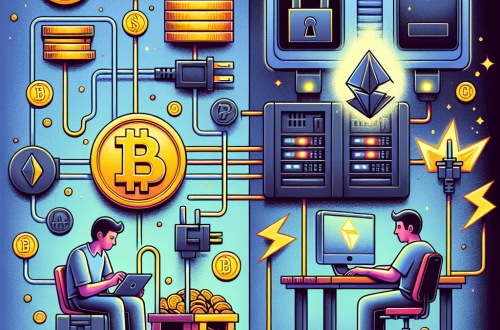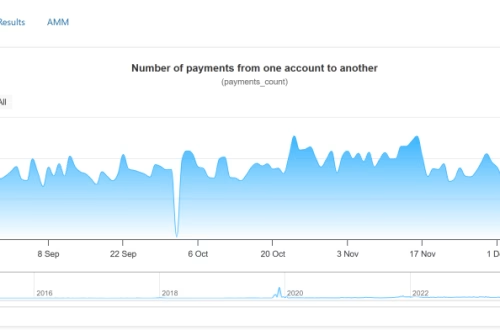What Causes Crypto Prices to Rise
Summary:
Crypto prices rise due to a mix of supply-demand dynamics, market sentiment, technological developments, regulatory shifts, and macroeconomic trends. Limited token supplies (like Bitcoin’s 21 million cap) create scarcity, while bullish news, celebrity endorsements, or institutional adoption fuel buying frenzies. Technical upgrades (e.g., Ethereum’s transition to proof-of-stake) boost investor confidence, whereas inflation or currency devaluations push users toward decentralized alternatives. For novices, understanding these interconnected drivers helps demystify unpredictable price swings and identifies strategic entry/exit points in volatile markets.
What This Means for You:
- Monitor News and Sentiment: Crypto prices react instantly to headlines like regulatory approvals or tech breakthroughs. Use free tools like CoinGecko’s “News” tab to track real-time sentiment shifts, and consider setting Google Alerts for major projects you follow.
- Diversify Based on Utility: Not all price surges are equal. Meme coins (e.g., Dogecoin) often spike due to hype but crash quickly. Allocate only a small portion of your portfolio to speculative assets, favoring projects with real-world use cases like decentralized finance (DeFi) or supply-chain tokens.
- Use Dollar-Cost Averaging (DCA): Instead of trying to “time the market,” invest fixed amounts weekly/monthly to mitigate volatility. Platforms like Binance or Coinbase offer automated DCA plans, smoothing out entry prices during bull runs.
- Future Outlook or Warning: While innovations like Bitcoin ETFs or central bank digital currencies (CBDCs) could fuel long-term growth, crypto remains highly speculative. Over 14,000 coins have failed since 2014. Never invest more than you can afford to lose, and avoid leverage trading until you’re experienced.
Explained: What Causes Crypto Prices to Rise
1. Supply and Demand Mechanics
Cryptocurrencies with fixed or deflationary supplies often rise in value as demand outstrips availability. Bitcoin’s halving events (occurring every 4 years) cut mining rewards by 50%, slowing new supply. Post-2020 halving, BTC’s price surged 600% in 12 months. Similarly, meme coins like Shiba Inu “burn” tokens (permanently removing them from circulation), creating artificial scarcity.
2. Market Sentiment and Social Media
Retail investors drive short-term pumps via hype cycles on Reddit, X (Twitter), or TikTok. GameStop-style “meme rallies” in 2021 saw Dogecoin rise 12,000% after Elon Musk tweets. Tools like Santiment’s social trends tracker analyze search volume and forum buzz to predict sentiment shifts before they impact prices.
3. Media Influence and Celebrity Endorsements
Mainstream media coverage amplifies FOMO (fear of missing out). When Coinbase listed on Nasdaq in 2021, BTC hit a then-all-time high of $63,000. Celebrity promotions also matter: Ethereum-based NFTs like Bored Ape Yacht Club skyrocketed after endorsements from Snoop Dogg and Paris Hilton.
4. Technological Developments
Upgrades that improve speed, security, or functionality attract users and capital. Ethereum’s 2022 “Merge” to proof-of-stake slashed energy use by 99%, prompting a 35% price jump. Layer-2 solutions (e.g., Polygon’s zkEVM) reduce transaction fees, making blockchains usable for micropayments or gaming—key for mass adoption.
5. Regulatory and Institutional Adoption
Positive regulations (e.g., MiCA in the EU) legitimize crypto, inviting institutional capital. When BlackRock filed for a Bitcoin ETF in 2023, BTC rallied 25% in two weeks. Conversely, crackdowns in China (2021) caused market-wide crashes. Track regulatory filings via sites like Congress.gov for the U.S. or the FCA in the UK.
6. Macroeconomic Trends
During inflation spikes or banking crises (e.g., 2023’s Silicon Valley Bank collapse), investors flock to “digital gold” Bitcoin as a hedge. Notably, BTC’s price rose 40% during the March 2023 banking turmoil, outperforming traditional assets like stocks or bonds.
7. Network Effects and Ecosystem Growth
Tokens tied to thriving ecosystems rise as usage grows. Solana’s SOL surged 12,000% in 2021 due to its booming NFT and DeFi sectors. Monitor Total Value Locked (TVL) on DeFiLlama to gauge a blockchain’s traction—the higher the TVL, the more valuable its native token becomes.
People Also Ask About:
- “Does Bitcoin’s limited supply guarantee price increases?”
While scarcity supports long-term value, short-term prices depend on demand. If adoption stalls (e.g., due to regulatory bans), even Bitcoin could stagnate. Past halvings correlated with bull runs, but external factors like recessions can override this effect. - “Why do meme coins pump faster than Bitcoin?”
Meme coins like PEPE or Dogwifhat have lower market caps ($500M vs. Bitcoin’s $1.2T), making them easier to manipulate. A few “whales” (large holders) can spark 500% spikes in hours via coordinated buys, but these often lead to “rug pulls” where insiders dump holdings. - “How do institutional investors affect crypto prices?”
Institutions bring stability and liquidity. MicroStrategy’s $14B Bitcoin holdings reduce sell pressure, while hedge funds using algorithmic trading can amplify daily volatility. Their entry signals credibility but may centralize control contrary to crypto’s decentralized ethos. - “Can government bans really crash crypto?”
Yes—China’s 2021 mining ban caused Bitcoin’s hash rate (and price) to drop 50% temporarily. However, decentralized networks often recover; mining operations relocated to the U.S. and Kazakhstan, restoring prices within months. - “What technical indicators predict crypto price hikes?”
RSI (Relative Strength Index) identifies overbought/oversold conditions, while MACD (Moving Average Convergence Divergence) spots trend reversals. A “golden cross” (50-day EMA crossing above 200-day EMA) often precedes bull markets, as seen before Bitcoin’s 2020 rally.
Expert Opinion:
Crypto’s volatility requires disciplined risk management. Prioritize projects with transparent teams, audited code, and measurable user growth—avoid tokens relying solely on viral marketing. Regulatory scrutiny will intensify, favoring compliant exchanges (Coinbase, Kraken) over offshore platforms. Long-term, blockchain’s utility in AI data markets or tokenized real-world assets could drive sustainable value beyond speculation.
Extra Information:
- CoinMarketCap’s Halving Guide – Explains Bitcoin’s supply mechanics and historical price impacts.
- Investopedia’s Crypto Glossary – Defines key terms like TVL, staking, and proof-of-work for beginners.
- Binance Academy – Free courses on technical analysis, wallet security, and DeFi protocols influencing prices.
Related Key Terms:
- how Bitcoin halving influences crypto prices US
- why meme coins surge in value 2024
- impact of Ethereum upgrades on ETH price
- best technical indicators for crypto bull runs
- how institutional investors affect Bitcoin price UK
- proof-of-stake vs proof-of-work price differences
- will Fed interest rates lower crypto prices
#crypto #prices #rise
*Featured image provided by Pixabay





